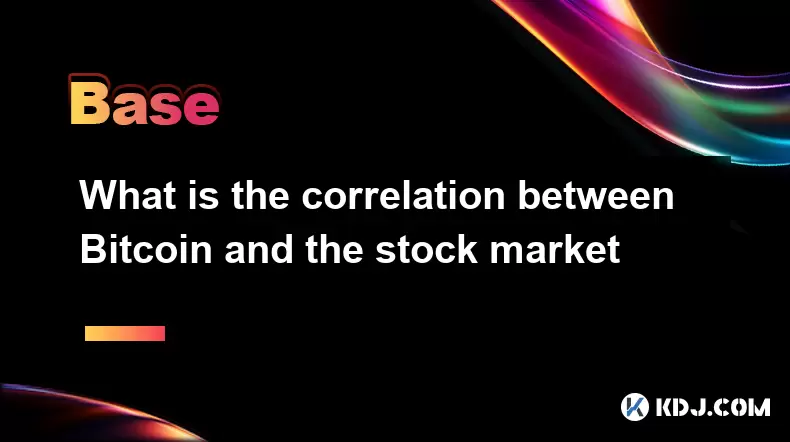-
 Bitcoin
Bitcoin $117600
-0.94% -
 Ethereum
Ethereum $3567
4.03% -
 XRP
XRP $3.422
5.29% -
 Tether USDt
Tether USDt $1.001
0.05% -
 BNB
BNB $741.2
2.18% -
 Solana
Solana $177.2
1.33% -
 USDC
USDC $0.9998
-0.01% -
 Dogecoin
Dogecoin $0.2432
13.70% -
 TRON
TRON $0.3277
3.88% -
 Cardano
Cardano $0.8322
3.44% -
 Hyperliquid
Hyperliquid $44.93
-3.85% -
 Stellar
Stellar $0.4712
0.77% -
 Sui
Sui $3.866
-3.70% -
 Chainlink
Chainlink $18.07
5.32% -
 Hedera
Hedera $0.2688
9.36% -
 Bitcoin Cash
Bitcoin Cash $515.8
3.87% -
 Avalanche
Avalanche $23.95
4.68% -
 Shiba Inu
Shiba Inu $0.00001493
3.69% -
 UNUS SED LEO
UNUS SED LEO $8.921
0.92% -
 Toncoin
Toncoin $3.235
0.73% -
 Litecoin
Litecoin $104.5
3.15% -
 Polkadot
Polkadot $4.335
2.58% -
 Uniswap
Uniswap $10.29
14.69% -
 Monero
Monero $330.8
-2.86% -
 Bitget Token
Bitget Token $4.904
2.83% -
 Ethena USDe
Ethena USDe $1.001
0.09% -
 Pepe
Pepe $0.00001336
-2.18% -
 Dai
Dai $0.9999
0.01% -
 Aave
Aave $320.5
-1.28% -
 Cronos
Cronos $0.1189
6.16%
Is the handling fee of web3 wallet high
The handling fees associated with Web3 wallets can differ based on transaction types, transaction size, network conditions, and the integration of third-party services.
Oct 18, 2024 at 09:12 pm

Understanding Web3 Wallet Handling Fees
In the rapidly evolving world of Web3, digital wallets play a crucial role in managing crypto assets securely and efficiently. While many Web3 wallets offer seamless experiences, users should be aware of the potential handling fees associated with these services.
1. Factors Affecting Handling Fees:
Handling fees in Web3 wallets vary based on several factors, including:
- Transaction Types: Different types of transactions, such as sending, receiving, swapping, or staking, may incur specific fees.
- Transaction Size: Larger transactions typically require higher fees.
- Network Conditions: When network traffic is high, fees can be elevated due to increased demand for block space.
- Third-Party Providers: Some wallets integrate with third-party services, which may charge additional fees for certain operations.
2. Common Web3 Wallet Handling Fees:
Here are some of the most common handling fees encountered in Web3 wallets:
- Gas Fees: Gas fees are transaction fees paid to miners or validators on blockchain networks to process transactions.
- Withdrawal Fees: Some wallets may charge a fee for withdrawing crypto assets.
- Exchange Fees: If a wallet offers integrated exchange services, it may levy fees for trading activities, including swaps.
- Subscription Fees: Certain wallets may offer subscription plans that include reduced or eliminated handling fees.
3. Comparing Web3 Wallet Handling Fees:
To choose the best Web3 wallet for their needs, users should compare the handling fees across different platforms. Major exchanges like OKX and Coinbase often offer competitive fees for crypto trades and transactions.
4. Minimizing Handling Fees:
To minimize handling fees, users can consider the following tips:
- Use Gas-Saving Wallets: Some wallets, such as MetaMask, allow users to adjust gas settings to reduce transaction costs.
- Utilize Off-Peak Hours: Network congestion tends to be lower during off-peak hours, leading to lower gas fees.
- Monitor Network Conditions: Stay informed about network conditions through platforms like Etherscan or Santiment to identify optimal times for transactions.
- Choose Wallets with Low Handling Fees: Compare the handling fees of different wallets before making a decision.
Conclusion:
Understanding Web3 wallet handling fees is crucial for maximizing the efficiency of crypto transactions. By carefully considering the various factors that affect fees and exploring strategies to minimize them, users can ensure that they optimize their Web3 experience while minimizing costs.
Disclaimer:info@kdj.com
The information provided is not trading advice. kdj.com does not assume any responsibility for any investments made based on the information provided in this article. Cryptocurrencies are highly volatile and it is highly recommended that you invest with caution after thorough research!
If you believe that the content used on this website infringes your copyright, please contact us immediately (info@kdj.com) and we will delete it promptly.
- Giants Protocol's G Token Live Launch: What You Need to Know
- 2025-07-18 21:30:13
- Solana, Rollblock, and the Gaming Token Revolution: What's Hot Now?
- 2025-07-18 22:10:13
- Crypto 2025: Will the Bull Run Be Led by Ethereum?
- 2025-07-18 22:10:13
- XRP, Dogecoin, and Crypto Bills: What's Shaking in the Crypto World?
- 2025-07-18 20:50:13
- Trump, Family Business, and Power: A New Era of Conflicts?
- 2025-07-18 20:30:12
- Trump, Business, & Bitcoin: A Crypto Capitalist's Vision
- 2025-07-18 20:40:12
Related knowledge

What is the Bitcoin dominance index
Jul 12,2025 at 10:35pm
Understanding the Bitcoin Dominance IndexThe Bitcoin Dominance Index, often abbreviated as BTC.D, is a metric used to measure Bitcoin's market capital...

What is the Bitcoin dominance index
Jul 11,2025 at 04:29am
What is the Bitcoin Dominance Index?The Bitcoin Dominance Index is a metric used to gauge Bitcoin's market capitalization relative to the total market...

What is the correlation between Bitcoin and the stock market
Jul 18,2025 at 04:56am
Understanding the Correlation Between Bitcoin and the Stock MarketThe correlation between Bitcoin and the stock market has become a topic of increasin...

Can crypto be a hedge against inflation
Jul 14,2025 at 12:21am
Understanding the Concept of Hedging Against InflationInflation refers to the general increase in prices and fall in the purchasing value of money ove...

Can crypto be a hedge against inflation
Jul 12,2025 at 12:07pm
Understanding the Role of Blockchain in Decentralized Finance (DeFi)Blockchain technology serves as the backbone of decentralized finance, offering a ...

What are account abstraction wallets
Jul 13,2025 at 01:43am
Understanding the Concept of Account AbstractionAccount abstraction is a term frequently used in the Ethereum ecosystem, particularly within discussio...

What is the Bitcoin dominance index
Jul 12,2025 at 10:35pm
Understanding the Bitcoin Dominance IndexThe Bitcoin Dominance Index, often abbreviated as BTC.D, is a metric used to measure Bitcoin's market capital...

What is the Bitcoin dominance index
Jul 11,2025 at 04:29am
What is the Bitcoin Dominance Index?The Bitcoin Dominance Index is a metric used to gauge Bitcoin's market capitalization relative to the total market...

What is the correlation between Bitcoin and the stock market
Jul 18,2025 at 04:56am
Understanding the Correlation Between Bitcoin and the Stock MarketThe correlation between Bitcoin and the stock market has become a topic of increasin...

Can crypto be a hedge against inflation
Jul 14,2025 at 12:21am
Understanding the Concept of Hedging Against InflationInflation refers to the general increase in prices and fall in the purchasing value of money ove...

Can crypto be a hedge against inflation
Jul 12,2025 at 12:07pm
Understanding the Role of Blockchain in Decentralized Finance (DeFi)Blockchain technology serves as the backbone of decentralized finance, offering a ...

What are account abstraction wallets
Jul 13,2025 at 01:43am
Understanding the Concept of Account AbstractionAccount abstraction is a term frequently used in the Ethereum ecosystem, particularly within discussio...
See all articles

























































































